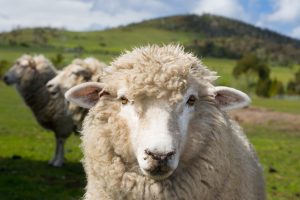Australia: Shoppers paying high meat prices as farmers say sheep not worth sending to market

Farmers in Australia are shooting sheep rather than taking them to market because the price they are being paid for lamb is not enough to cover their costs.
Retail prices for meat remain high and food relief charities say they are supporting record numbers of families struggling with the cost of living.
The national lamb supply is up almost 40 per cent on last year — that’s an extra 640,000 head — and this glut is driving down prices for farmers, according to the producer-owned Meat and Livestock Australia (MLA).
Retail meat prices over the past 24 months have increased up to 15 per cent for some products, according to data from Deakin University, with family favourite beef mince up 6 per cent.
Key points:
- Meat prices remain high for consumers, while farmers are struggling to break even.
- The national lamb supply is up almost 40 per cent on last year, creating a glut and sending prices tumbling for farmers.
- Butchers are urging consumers to shop around, and say meat prices are expected to gradually come down.
Wool Producers Australia president Steve Harrison said farmers were hurting across Victoria, northern New South Wales, and Western Australia.
“Even in our district here we’ve got people shooting sheep, they’re not commercially viable to even sell, particularly in the ram section,” said Mr Harrison, who runs a merino stud with his wife and daughters in Gippsland.
In November, livestock producers were fetching an average $8.40 per kilo for lambs that are now getting around $4.50 per kilo at the saleyards.
Farmers are a pragmatic bunch, and they knew livestock prices could not stay at last year’s record highs.
“We had to come back a fair bit, but I think it’s come a bit too far, especially the way costs have gone up,” said Gordon Moon, a sheep and cattle farmer from Wulgulmerang in eastern Victoria.
“Prices are way down, for cattle it’s a bit less than half of what it was last year.